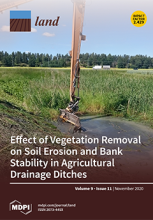/ library resources
Showing items 1 through 9 of 170.Planting criteria of new vineyards should comply with rational and sustainable criteria, taking into account the potential mechanisability of existing viticultural areas. However, an established methodology for this assessment is still lacking.
Through an exploratory case study conducted in the Pesio Valley, northwest Italy, this paper proposes a framework for maintaining traditional chestnut production landscapes and addressing future development policies.
Since, the Common Agricultural Policies (CAP) reform in 2003, many efforts have been made at the European level to promote a more environmentally friendly agriculture.
Over the past centuries, land systems in Italy experienced fundamental shifts, owing to the availability of new energy forms, population surges, and technological progress.
Agroforestry, relative to conventional agriculture, contributes significantly to carbon sequestration, increases a range of regulating ecosystem services, and enhances biodiversity.
Landscapes changes are a result of a wide range of interactions between actors and driving forces (DFs).
Effectiveness of Agri-Environmental Schemes (AESs) as tools to enhance the rural environment can be achieved not only by increasing uptake rates, but also by avoiding participating farmers abandoning the scheme once they are in.
Case studies of social-ecological landscapes that consider local, spatially explicit land cover changes are necessary for the development of generalised knowledge on deforestation.
This study proposes a novel method to assess the overall economic effects of agricultural droughts using a coupled agronomic-economic approach that accounts for the direct and indirect impacts of this hazard in the economy.
Pagination
Land Library Search
Through our robust search engine, you can search for any item of the over 73,000 highly curated resources in the Land Library.
If you would like to find an overview of what is possible, feel free to peruse the Search Guide.



